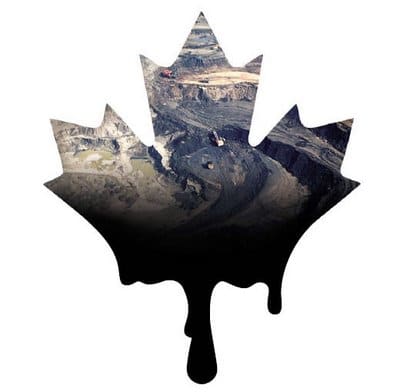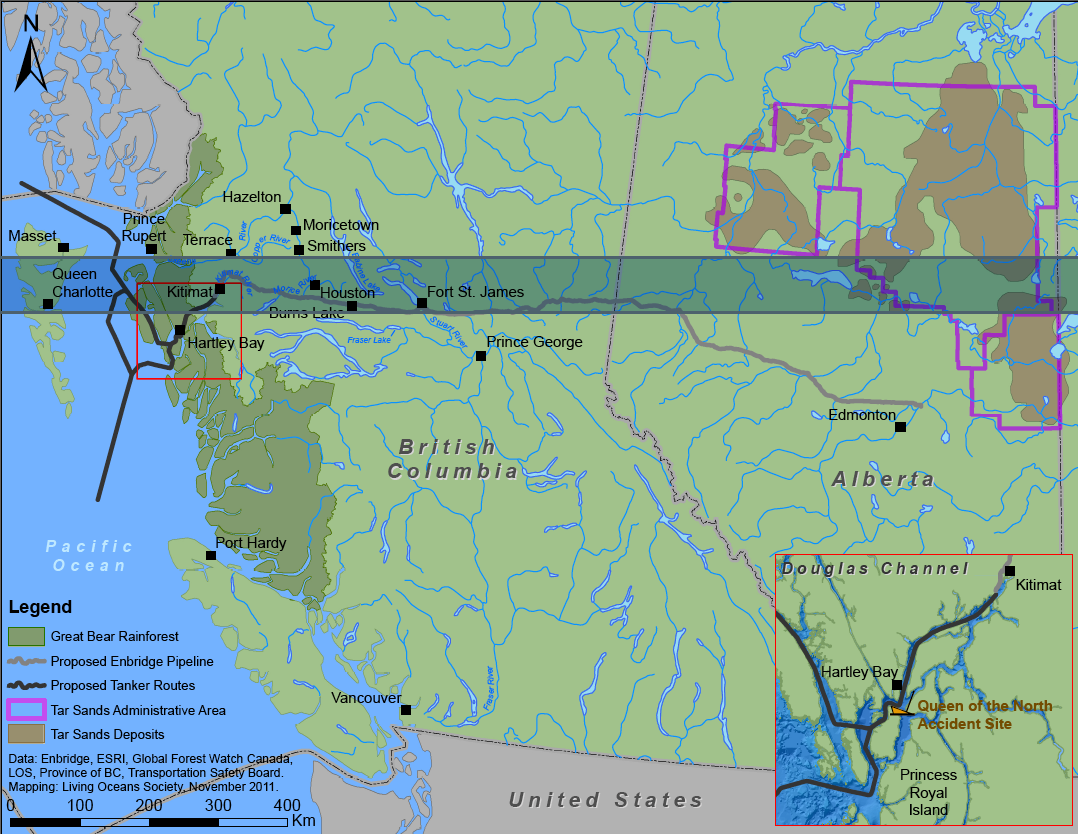In the wake of the State Department’s announcement to delay the Keystone XL decision, another proposed tar sands pipeline is coming under closer scrutiny. The Northern Gateway Pipeline, proposed by Canada’s Enbridge Energy, would stretch nearly 750 miles across Alberta and British Columbia before reaching an inland port. (DeSmogBlog has been following the Northern Gateway Pipeline story in detail.)
A report released today by the Natural Resources Defense Council, the Pembina Institute, and the Living Oceans Society documents the enormous risk – environmental, economic, and social – to communities and regions along the pipeline and tanker paths, specifically to valuable salmon-bearing rivers and coastal ecosystems, including the habitat of the endangered Spirit Bear.
The impacts anticipated by the “Pipeline and Tanker Trouble” report include:
- Compromising the lifestyles of First Nations who depend on the region’s lands and waters for their livelihoods, culture, and health.
- Threatening the economic well-being of thecommunities of British Columbia that depend on fisheries and forests.
- Potential devastation from a major oil spill from the pipeline or an oil supertanker, which could destroy economically important salmon habitat, as well as the habitat of Spirit Bears and grizzlies, and whales, orcas, and other marine life that depend on these rich coastal waters.
- Harm from an oil spill to the Great Bear Rainforest thatthe province and First Nations have worked hard toprotect from unsustainable forestry practices and to shift to a conservation-based economy.
Before getting into the details of the report, a quick bit of background. After tar sands are extracted from Alberta’s Athabasca boreal region, the sticky, heavily viscous muck must be diluted, shipped, and refined to be of any use. Right now, major pipeline systems operated by companies like TransCanada and Enbridge cart a big share of the tar sands crude down to inland refineries in places like Cushing, Oklahoma and Patoka, Illinois.
According to their own literature, suppliers and refiners are desperate to connect the tar sands supply with coastal refineries where the DilBit can be refined into diesel, which fetches a higher price on the international market. In other words, coastal refineries are necessary for exporting the tar sands product, and exporting the tar sands product would be most profitable for the energy companies.
This ultimate export goal was struck a major blow when, as we’ve covered here on DeSmogBlog, a State Department decision on approval of the Keystone XL extension of TransCanada’s Keystone pipeline system was delayed. Keystone XL would have linked the tar sands supply with Valero refineries on the Gulf Coast of Texas, where the low grade diesel could then be shipped overseas to a booming international diesel markets.
Which brings us to the proposed Northern Gateway Pipeline. The route’s risks come in two parts: the pipeline itself, and then the waterways that must be navigated by big supertankers to deliver the tar sands crude to refineries.
As the report makes clear, the threats to the region and its residents along both the pipeline and waterway paths are very real, and quite serious.
First, the pipeline. If constructed, it would cross at least 785 rivers and streams, and the headwaters of three of the most important watersheds – the Mackenzie, the Fraser, and the Skeena – in North America, before reaching an inland port on the Kitimat River.
(Click on the map for a larger PDF version.)
Of the route, report co-author Susan Casey-Lefkowitz wrote, “The geology of this area is complex, and destructive landslides are common.”
Tar sands pipelines seem to be more susceptible to ruptures and spills, and when DilBit does spill, the impacts are even worse than regular crude spills.
Just last year, an Enbridge tar sands pipeline ruptured in Marshall, Michigan, and even twelve months later the town was reeling from the impacts.
After the DilBit is delivered from the pipeline onto supertankers waiting on the Kitimat River, the route that these shipments must take is incredibly precarious. Casey-Lefkowitz writes:
Echoing this point was Katie Terhune of the Living Oceans Society. “History has shown that oil tankers come with oil spills,” said Terhune. “It is not a question of if, but when, a spill will happen.”
The report gets into even more detail:
With Keystone XL‘s path to the Gulf Coast now on hold, pressure is mounting to find new coastal outlets for this tar sands crude. While the big oil companies stand to profit enormously from exporting diesel to booming overseas markets, the communities along the pipeline and tanker routes stand to assume all the risks. As this new report makes crystal clear, these risks are enormous, and practically inevitable.
Subscribe to our newsletter
Stay up to date with DeSmog news and alerts







